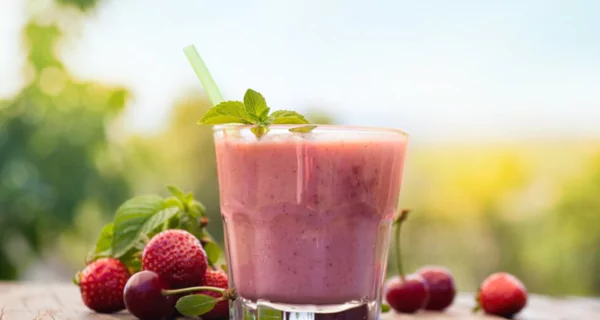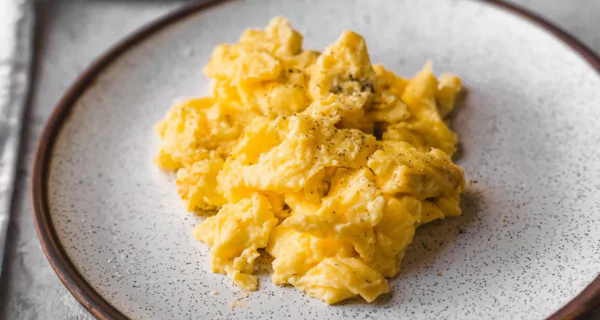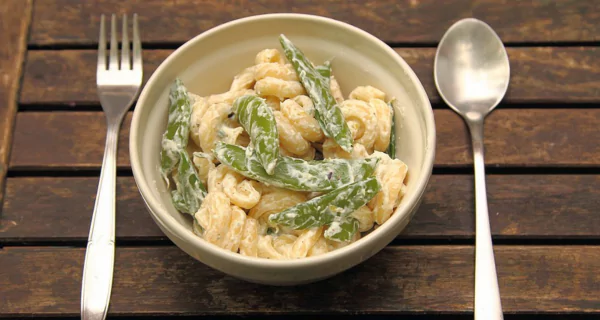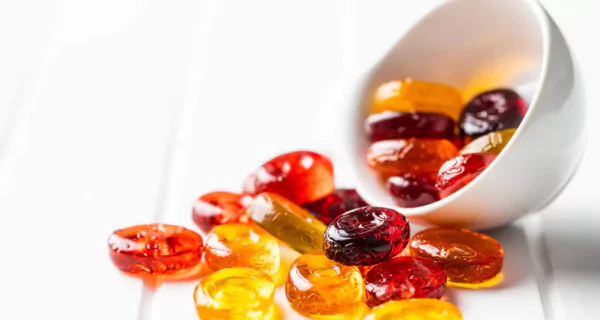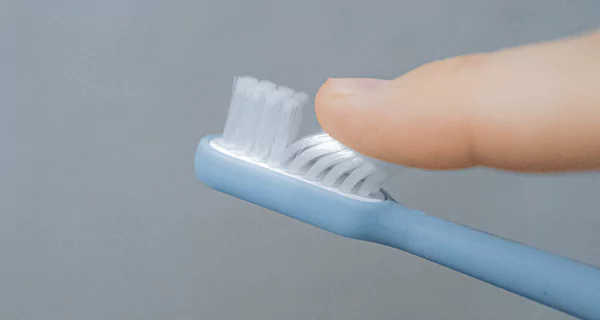Last Updated on: 16th December 2025, 11:00 am
Wondering what can I eat after wisdom teeth removal?? Discover 15 soft, nutritious foods to eat while healing, tips for a smooth recovery, and foods to avoid.
Wisdom teeth, also known as the third molars, are located at the very back of the mouth, with one in each corner. Having your wisdom teeth removed can be a significant step in maintaining good oral health, but it often comes with a few days of discomfort and a list of dietary restrictions. One of the most anxiety-inducing thoughts when it comes to wisdom teeth removal is: “What can I eat?”
Following a proper post-surgery diet is crucial to ensure a smooth recovery. Eating the wrong foods can delay healing or lead to complications, while consuming the right foods can reduce discomfort, prevent irritation, and speed up the recovery process.
This comprehensive guide will walk you through everything you need to know about what to eat after wisdom teeth removal, the foods to avoid, and how to safely transition back to your regular diet.
Why your diet matters after wisdom teeth removal
After wisdom teeth removal, your mouth needs time to heal. The procedure leaves open wounds in the gums, and the area will be sensitive for several days. Recovery time typically ranges between 3 days and 2 weeks, depending on the complexity of the surgery and individual healing rates. A proper diet plays a crucial role in ensuring a smooth recovery by minimizing irritation, supporting healing, and preventing complications.
Minimizing irritation: Soft foods are a cornerstone of post-surgery care because they are easy to eat without excessive chewing, which could irritate the surgical site or dislodge the blood clot protecting the wound. The blood clot is essential for healing, as it acts as a protective barrier over the wound and promotes the growth of new tissue. Chewing hard, sticky, or crunchy foods can disturb this process, causing unnecessary pain and prolonging recovery.
Supporting healing: Your body needs the right nutrients to repair damaged tissues, reduce inflammation, and recover faster. Incorporating nutrient-rich foods into your diet is essential for this process:
- Vitamin C: Vital for collagen production, which is a key component of gum and tissue repair. Foods like mashed fruits (e.g., bananas or applesauce) or blended smoothies with vitamin C-rich ingredients can help.
- Protein: Essential for rebuilding tissue and accelerating recovery. Opt for soft sources of protein, such as yogurt, cottage cheese, or well-blended soups with added protein like chicken or tofu.
- Anti-inflammatory foods: These include omega-3-rich ingredients (like fish in pureed soups) or foods rich in antioxidants, such as blueberries or spinach, which can be added to smoothies.
Preventing complications: Certain foods can hinder recovery by irritating the surgical site or dislodging the blood clot. This can lead to a painful condition called dry socket, where the underlying bone and nerves are exposed.
By carefully choosing soft, nutrient-dense foods, you can protect the surgical sites, prevent complications like dry socket, and ensure a faster and more comfortable recovery.
15 Foods to eat After Wisdom Teeth Removal
The first few days after surgery are all about consuming foods that are soft, easy to eat, and require minimal or no chewing. These foods not only ensure you’re getting the nutrients needed for recovery but also help avoid irritation or complications at the surgical site. Let’s break down why each option is beneficial:
1. Mashed potatoes
Mashed potatoes are creamy, smooth, and gentle on the gums. They provide carbohydrates, plus they are rich in calories and nutrients, giving you energy to aid recovery. Just ensure that they’re served warm, not hot, as a high temperature can irritate the surgical site.
2. Smoothies
Smoothies are nutrient-packed and require no chewing. You can blend fruits like bananas or berries with yogurt or milk to create a meal rich in vitamins and protein. Avoid using a straw, as the suction can dislodge the blood clot and delay healing. Avoid fruits with small seeds, they may get stuck in the wound.
3. Applesauce
Applesauce is an easy and nutritious way to incorporate fruit into your diet during the first 24 hours after surgery. Made from pureed apples that are typically peeled and cored, applesauce retains many beneficial nutrients, including vitamins B, C, and E, as well as copper.
Vitamin C, which is abundant in apples, offers several healing benefits. It can help reduce inflammation and discomfort, strengthen your immune system, and support wound healing by promoting fibroblast migration and aiding in tissue repair. This makes applesauce a gentle yet effective option for aiding recovery while being soft and easy to eat.
4. Greek yogurt
Greek yogurt is an excellent choice after dental surgery due to its smooth, creamy texture and high nutritional value. It’s rich in protein, calcium, and essential vitamins and minerals like zinc, all of which play vital roles in the healing process.
Opting for plain or low-sugar varieties of yogurt is recommended to minimize irritation and maximize its soothing and healing properties. Its creamy texture helps numb and soothe the surgical area, providing both nourishment and comfort during recovery.
5. Scrambled eggs
Scrambled eggs are a soft, fluffy, and nutritious food that’s ideal for post-surgery recovery. Their easy-to-chew texture makes them a great choice once you’re ready to gently use your other teeth for chewing. Adding a splash of milk while cooking enhances their softness, making them even easier to eat.
Eggs are an excellent source of high-quality protein, which is essential for tissue repair and healing. In addition to protein, they are packed with vital nutrients such as vitamins A and B12, zinc, iron, and selenium. These vitamins and minerals play key roles in supporting immune function, reducing inflammation, and promoting overall recovery.
6. Oatmeal
Oatmeal is a comforting, filling, and highly nutritious food, making it a great option for recovery after wisdom teeth removal. It’s rich in essential fiber, vitamins, and minerals that support overall health and provide lasting energy.
However, due to its slightly chewy and sticky texture, it’s best to wait at least three days post-surgery before including oatmeal in your diet. Instant oats are a better choice during recovery compared to steel-cut oats, as they are softer and easier to eat.
Be sure to serve oatmeal lukewarm and avoid adding toppings like nuts or dried fruits, which could irritate the surgical site or become stuck in the wound.
7. Soups
Soups made from broth or blended ingredients are an excellent choice after wisdom teeth removal. They are easy to consume because they require no chewing and won’t irritate or harm the extraction sites. Additionally, soups are packed with vitamins and minerals, providing essential nutrients when eating solid fruits and vegetables isn’t an option.
Blended soups also help maintain hydration, which is crucial during recovery. Options like pumpkin, tomato, beef broth, or cream of celery are all great choices. If you have a blender, you can puree soups with meat or vegetables to create a smooth consistency. Clear broths are especially hydrating and gentle, but be sure to strain out any chunks to ensure they’re easy to swallow and won’t interfere with healing.
8. Ice cream or sorbet
Ice cream is a top choice for post-tooth extraction recovery, especially in warm weather. Its cold, soft texture makes it gentle on a tender mouth and helps reduce swelling by numbing the area naturally. This makes it both a soothing and enjoyable treat during recovery.
For best results, opt for soft-serve ice cream, which requires minimal effort to eat and is easier on the jaw. Avoid hard mix-ins, crunchy toppings, or overly sugary varieties that could irritate the surgical site or prolong healing. It’s also better to enjoy your ice cream in a cup rather than a cone to avoid unnecessary chewing. Similarly, sorbet can be a great alternative, providing the same cooling effect and smooth texture.
9. Cottage cheese
Cottage cheese is an excellent food to include in your recovery diet after wisdom tooth surgery. Its soft, creamy texture makes it easy to eat and gentle on the mouth as you gradually reintroduce chewing.
In addition to being easy to consume, cottage cheese is rich in protein, which is essential for tissue repair and wound healing. It’s also packed with vitamins and minerals while being low in calories, making it a nutritious and balanced option.
You can enjoy cottage cheese on its own or incorporate it into other recovery-friendly foods. For example, you can mix it into scrambled eggs for a protein boost or blend it into smoothies for a creamy texture and added nutrients.
10. Banana or avocado puree
Mashed bananas and avocados are excellent, nutrient-rich options for recovery after dental surgery. Their naturally soft and creamy textures make them easy to eat without straining your jaw or causing discomfort, even during the initial stages of healing.
- Avocados: Avocados are packed with health benefits, offering a rich source of vitamins K and C, potassium, and healthy fats. These nutrients support wound healing, reduce inflammation, and provide sustained energy during recovery. For easier consumption, try mashed or whipped avocados, or even guacamole, ensuring there are no chunky additions like raw onions or peppers that could irritate sensitive areas.
- Bananas: Bananas are another nutritious choice, offering essential vitamins and minerals such as potassium, vitamin B6, manganese, and folate. Their naturally soft texture is gentle on healing gums, and mashing them further enhances their ease of consumption, reducing any risk of discomfort. Bananas are also slightly sweet, making them an enjoyable snack or a great addition to recovery-friendly smoothies.
11. Pudding or custard
Pudding is a soothing and practical dessert option for the initial stages of recovery after a tooth extraction. Its smooth, creamy texture is gentle on your mouth, making it easy to swallow without causing discomfort or irritation to the surgical sites.
Excessive sugar can potentially irritate sensitive gums, so minimizing sugar content ensures a more comfortable recovery.
12. Soft pasta
Pasta can be an excellent option for a post-surgery recovery meal, but it requires a few adjustments to ensure it’s easy and safe to eat. Instead of cooking pasta to the usual “al dente” texture, make sure it’s cooked until very soft and slightly mushy. This makes it easier to chew and reduces the risk of irritation or discomfort.
Cutting the pasta into small pieces can further simplify eating, especially if you’re still avoiding excessive jaw movement. Avoid acidic sauces like marinara or tomato-based, as they can sting sensitive gums and delay healing. Opt for mild, creamy sauces or simple blended options that are gentle on the mouth.
13. Hummus
Hummus, a creamy Middle Eastern dip, is a nutritious and recovery-friendly option after wisdom teeth removal. Packed with healthy fats, protein, vitamins, and minerals, it supports healing while being gentle on sensitive gums.
You can easily make hummus at home by blending chickpeas, tahini, olive oil, garlic, and lemon, or purchase it pre-made from most supermarkets. While crunchy chips or traditional pita bread should be avoided during recovery, hummus can be enjoyed on its own or with soft, easy-to-chew pita if your mouth allows.
14. Protein shakes
Protein shakes aren’t just for fitness enthusiasts, they’re also an excellent option for recovery after wisdom teeth removal. Packed with high-quality protein, essential fatty acids, and a variety of vitamins and minerals, they offer a nutrient-dense snack or meal in one convenient glass.
These shakes help maintain your energy levels and support the healing process. To avoid disturbing the surgical site, use a spoon to consume the shake instead of a straw.
15. Pureed vegetables
Cooked vegetables such as carrots, squash, or peas are an excellent way to incorporate essential vitamins and nutrients, such as vitamin A, potassium, and fiber into your diet, while recovering from dental surgery. By blending them into a smooth puree, you can enjoy their nutritional benefits without the need for chewing, which could strain your jaw or irritate the surgical site.
Foods to avoid after wisdom teeth removal
During recovery from wisdom teeth removal, it’s just as important to avoid certain foods as it is to consume soft and nutritious ones. Some foods can irritate the surgical site, delay healing, or even lead to complications. Here are the key categories of foods to steer clear of:
- Crunchy foods: Snacks like chips, nuts, or granola can scratch or irritate the healing gums. Small pieces can also get lodged in the wounds, increasing the risk of infection.
- Sticky foods: Candies like caramel or taffy can cling to the surgical area, making them difficult to clean and potentially causing discomfort or irritation.
- Spicy foods: Spicy ingredients can inflame sensitive gum tissue and prolong the healing process, leading to unnecessary discomfort.
- Acidic foods: Citrus fruits, tomatoes, and vinegar-based dressings are highly acidic and can sting or irritate the surgical site, making eating unpleasant.
- Hard foods: Raw vegetables, tough meats, and hard bread require significant chewing, which can strain the jaw and disturb the healing process.
Being mindful of these food categories helps protect the surgical site, prevent complications, and ensure a smoother, more comfortable recovery.
Tips for eating safely after wisdom teeth removal
Eating safely after wisdom teeth removal is just as important as choosing the right foods. Proper eating habits help protect the surgical area, minimize discomfort, and promote healing. Here are some key tips to follow:
- Avoid straws: Using a straw creates suction, which can dislodge the blood clot and lead to dry socket, a painful condition that can delay healing.
- Chew on the opposite side: If surgery was performed on only one side of your mouth, chew on the opposite side to avoid irritating or disturbing the healing area.
- Keep foods lukewarm: Hot foods can increase swelling and irritate the surgical site. Stick to lukewarm or cold foods to soothe the area and avoid discomfort.
- Take small bites: Avoid large portions that might accidentally contact the surgical area. Small bites are easier to manage and reduce the risk of injury.
- Stay hydrated: Drink plenty of water to stay hydrated and promote healing. Avoid sugary, caffeine or carbonated drinks that can irritate the gums.
By following these tips, you can protect the healing area and reduce discomfort during meals.
Why food textures matter in recovery
Food texture matters during wisdom teeth recovery, as certain types can irritate the surgical site or delay healing. Avoid crunchy foods (chips, nuts), sticky foods (candy, peanut butter), and tough foods (steak, raw vegetables) that can strain your jaw or cause discomfort. Stick to soft, smooth options like mashed potatoes, yogurt, pureed vegetables, and applesauce for a gentler recovery.
When to transition back to regular foods
Transitioning back to regular foods after wisdom teeth removal depends on the complexity of your surgery and your body’s healing process. Most people can begin incorporating firmer foods around 7-10 days post-surgery, but this timeline can vary.
Start by introducing semi-soft foods like soft-cooked vegetables, shredded chicken, or rice. Chew slowly and cautiously to minimize discomfort and prevent strain on the healing areas.
Pay close attention to how your mouth feels during this transition. If you experience irritation or pain while chewing, it’s best to return to softer foods for a few more days before trying again.
During your follow-up appointment, consult your dentist to ensure it’s safe to resume a regular diet. They can evaluate your recovery and provide guidance tailored to your specific needs.
Signs You’re ready to transition to firmer foods
Knowing when to start eating firmer foods can be challenging. Moving too quickly can cause complications, while waiting too long may leave you undernourished.
Signs to look for:
- Pain and swelling have subsided significantly.
- You can chew soft foods like scrambled eggs or soft pasta without discomfort.
- The surgical site shows no signs of redness or infection.
Gradually reintroduce firmer foods like cooked vegetables and shredded meats while avoiding anything crunchy or sticky.
How to plan your post-surgery diet
Planning your diet in advance ensures you have everything you need for a comfortable recovery. Prepare soft foods and nutrient-rich meals ahead of time so you can focus on healing after surgery.
Steps to plan ahead:
- Stock up on essentials: Purchase recovery-friendly foods such as yogurt, applesauce, broth, and other soft, easy-to-eat items before your surgery.
- Prepare meals in advance: Pre-cook and freeze dishes like mashed potatoes or pureed vegetables to have ready-made meals that require minimal effort.
- Remove risky foods: Make a list of foods to avoid, such as crunchy, sticky, or spicy items, and remove them from your kitchen space to prevent accidental consumption.
With a little preparation, you can create a stress-free recovery environment that prioritizes proper healing and comfort.
The Role of Nutrition in Recovery
Proper nutrition is essential for a smooth recovery after wisdom teeth removal, as it supports tissue repair, reduces inflammation, and promotes healing. Balancing nutrition with taste can make the recovery process more enjoyable. With the right approach, you can maintain a nutritious diet that is both flavorful and supportive of your recovery.
Understanding the role of collagen in healing
Collagen is a key protein that helps rebuild tissues, making it essential for recovery. Incorporating collagen-rich foods into your diet can promote faster and more effective healing. Some collagen-rich options are:
- Bone broth: Packed with collagen and easy to consume on a soft diet.
- Egg whites: A rich source of amino acids needed for collagen production.
- Pureed fish: Soft fish like salmon or cod offer collagen along with anti-inflammatory omega-3 fatty acids.
Consider collagen supplements if recommended by your healthcare provider.
Protein: a key nutrient for healing
Protein supports tissue repair and helps your body recover more efficiently. After surgery, dietary restrictions might reduce your protein intake, but soft, protein-rich foods can help meet your nutritional needs. Soft Protein Sources:
- Scrambled eggs
- Greek yogurt
- Cottage cheese
- Protein shakes (consume without a straw)
Vitamins and minerals: essential for recovery
Nutrients like vitamins C and D, calcium, and zinc are critical for wound healing and reducing inflammation. Including foods rich in these nutrients can accelerate the recovery process. Nutrient sources for recovery include:
- Vitamin C: mashed sweet potatoes, pureed carrots
- Vitamin D: fortified milk, egg yolks calcium: yogurt, cottage cheese
- Zinc: mashed avocado, soft-cooked eggs
If needed, a daily multivitamin can help fill nutritional gaps, but consult your dentist or doctor before starting any supplement. Incorporating these foods and nutrients into your diet will help speed up recovery and reduce the risk of complications.
Can You use meal replacement drinks after wisdom teeth removal?
Meal replacement drinks are a convenient option when eating solid foods feels too difficult. They provide essential nutrients in an easily consumable form, making them practical during the early stages of recovery.
Choose low-sugar options, avoid using a straw to prevent dry socket, and pair them with soft foods for variety. These drinks should complement, not replace, a balanced post-surgery diet.
How to handle dietary restrictions with food allergies
For individuals with food allergies, navigating recovery diets can be challenging but manageable with proper substitutions:
- Dairy allergy: Replace yogurt or milk-based smoothies with almond, coconut, or soy-based alternatives.
- Gluten intolerance: Opt for gluten-free oatmeal or mashed sweet potatoes instead of wheat-based options.
- Nut allergy: Avoid nut-based protein shakes and focus on egg or pea protein for a safe, nutritious alternative.
Consult your dentist or surgeon before surgery to plan allergy-friendly meals that meet recovery guidelines.
Managing symptoms and Complications Through Your Diet
In addition to choosing nutrient-rich foods, managing common post-surgery symptoms like nausea, swelling, and the risk of dry socket can significantly improve your recovery experience. Here’s how your diet and eating habits can help:
Dealing with post-surgery nausea
Mild nausea is a common side effect of anesthesia or pain medications after wisdom teeth removal. Adjusting your diet can help alleviate this discomfort:
- Start with clear liquids like broth or herbal tea to settle your stomach.
- Gradually introduce bland, easily digestible foods like applesauce or mashed bananas.
- Avoid greasy, spicy, or overly rich foods that may exacerbate nausea.
If nausea persists, consult your dentist or surgeon for additional guidance.
How to manage swelling
Swelling is a natural part of the healing process, but certain foods and beverages can help reduce inflammation and provide relief.
- Cold foods: Ice cream, sorbet, or chilled applesauce numb the surgical area and reduce swelling.
- Omega-3 fatty acids: Found in soft fish like salmon (pureed or well-cooked) and flaxseed, omega-3s have anti-inflammatory properties.
- Herbal teas: Chamomile or ginger tea, served lukewarm, can soothe inflammation and promote comfort.
- What to avoid: Salty foods, which can increase fluid retention and prolong swelling.
How to avoid dry socket with your diet
Dry socket occurs when the protective blood clot at the surgical site is dislodged, exposing the bone and nerves beneath. Preventative eating habits are key to avoiding this painful condition. Some steps to prevent dry socket are:
- Avoid using straws or creating suction in your mouth, which can dislodge the clot.
- Do not consume overly hot foods that could dissolve the clot prematurely.
- Refrain from vigorous rinsing or spitting after meals, as this can disturb the healing site.
How pain medications can affect your appetite
Pain medications prescribed after wisdom teeth removal can lead to side effects like nausea, dry mouth, or a reduced sense of taste, which may impact your appetite and make it harder to maintain proper nutrition.Tips to Manage Appetite Changes:
- Eat small, frequent meals: This practice prevents nausea and keeps you nourished even with a reduced appetite.
- Choose mild flavors: Foods like applesauce or plain yogurt are gentle on the stomach and less likely to worsen nausea.
- Drink plenty of water: Hydration alleviates dry mouth, a common side effect of pain medications, and makes eating more comfortable.
If appetite changes persist or interfere with recovery, communicate with your dentist or surgeon for guidance.
The connection between sleep and healing
Healing isn’t just about nutrition, quality sleep is equally important. Sleep supports immune function, reduces inflammation, and promotes tissue repair, all essential for recovery.
Dietary tips for better recovery:
- Avoid caffeine after noon: Opt for herbal teas like chamomile to relax without disrupting sleep.
- Choose light evening snacks: Foods like banana puree or a small serving of cottage cheese can curb hunger without being heavy.
- Stay hydrated: Dehydration can affect sleep quality, so drink water consistently throughout the day.
The Psychological Benefits of Comfort Foods During Recovery
Recovering from wisdom teeth removal can be both physically and emotionally challenging, but your diet can play a significant role in supporting your mental well-being.
The long-term benefits of post-surgery dietary adjustments
While post-surgery diets focus on short-term healing, the habits developed during recovery can bring lasting benefits. Incorporating nutrient-rich foods encourages healthier eating patterns, while increased hydration awareness can inspire better long-term habits. Additionally, slowing down and eating mindfully during recovery fosters a more intentional approach to meals that can carry over even after healing is complete.
How to stay motivated with a restricted diet
The monotony of a soft-food diet can feel discouraging, but keeping your meals exciting and maintaining a positive mindset can help:
- Experiment with recipes: Try creative combinations like mashed avocado with scrambled eggs or blended soups with herbs.
- Add visual appeal: Use garnishes like parsley or olive oil to make meals more appetizing.
- Set recovery goals: Remind yourself that sticking to your diet will speed up healing and allow you to enjoy regular foods sooner.
By embracing creativity and staying focused on recovery, you can transform your restricted diet into an opportunity for exploration and growth.
These strategies highlight how your recovery diet can do more than just aid healing—it can support emotional well-being, accommodate dietary needs, and inspire long-term healthy habits.
How to Maintain Oral Hygiene While Eating Soft Foods
Maintaining good oral hygiene is critical during the recovery period, especially with a diet focused on soft foods that may leave residue in your mouth. Proper care ensures that the surgical sites stay clean and reduces the risk of infection.
Tips for post-surgery oral hygiene:
- Rinse gently with a saltwater solution after meals to remove debris.
- Avoid brushing directly over the surgical site for the first few days.
- Use a soft-bristled toothbrush to clean the other areas of your mouth.
- Avoid using mouthwash with alcohol, as it can irritate healing tissues.
Proper oral care complements your post-surgery diet to support faster healing.
Conclusion
Eating the right foods after wisdom teeth removal is crucial for a smooth and speedy recovery. Soft, nutrient-rich options help minimize discomfort and support the healing process, while avoiding irritants ensures the surgical site remains protected.
Recovery can be physically demanding, but comfort foods provide valuable emotional support. Familiar, soothing meals not only reduce stress but also boost your mood, offering both physical and psychological relief during the healing period.
Listening to your body and consulting your dentist when needed are essential steps to ensure proper care. With a carefully planned diet and attention to your recovery, you’ll be back to enjoying your favorite foods in no time!
Frequently Asked Questions
How soon can I eat after wisdom teeth removal?
Can I drink coffee or tea after surgery?
What happens if I eat crunchy foods too soon?
How long should I avoid straws after wisdom teeth removal?
Can I eat ice cream every day after wisdom teeth removal?
Share
References
1. Cleveland clinic staff. (2024, october 11). Wisdom teeth removal. Cleveland Clinic. https://my.clevelandclinic.org/health/treatments/22119-wisdom-teeth-removal
2. Crichton, C., Ames, H. (2021, november 24). What foods can I eat after wisdom tooth extraction? https://www.medicalnewstoday.com/articles/321300
3. Mayo Clinic staff. (2024, april 5).Wisdom tooth removal. Mayo clinic. https://www.mayoclinic.org/tests-procedures/wisdom-tooth-extraction/about/pac-20395268
4. Raman, R. (2024, december 5). What to Eat and Avoid After Wisdom Teeth Removal. Healthline. https://www.healthline.com/nutrition/what-to-eat-after-wisdom-teeth-removal
5. Taniguchi, S., Abe, A., Ito, Y., Ishihama, T., Hayashi, H., Momokita, M., Naito, R., & Shibata, K. (2022, april 11). Factors associated with a reduced food intake after third molar extraction among adults: a cross-sectional study. BMC Oral Health, 22(1). https://doi.org/10.1186/s12903-022-02154-w
-
Nayibe Cubillos M. [Author]
Pharmaceutical Chemestry |Pharmaceutical Process Management | Pharmaceutical Care | Pharmaceutical Services Audit | Pharmaceutical Services Process Consulting | Content Project Manager | SEO Knowledge | Content Writer | Leadership | Scrum Master
View all posts
A healthcare writer with a solid background in pharmaceutical chemistry and a thorough understanding of Colombian regulatory processes and comprehensive sector management, she has significant experience coordinating and leading multidisciplina...





